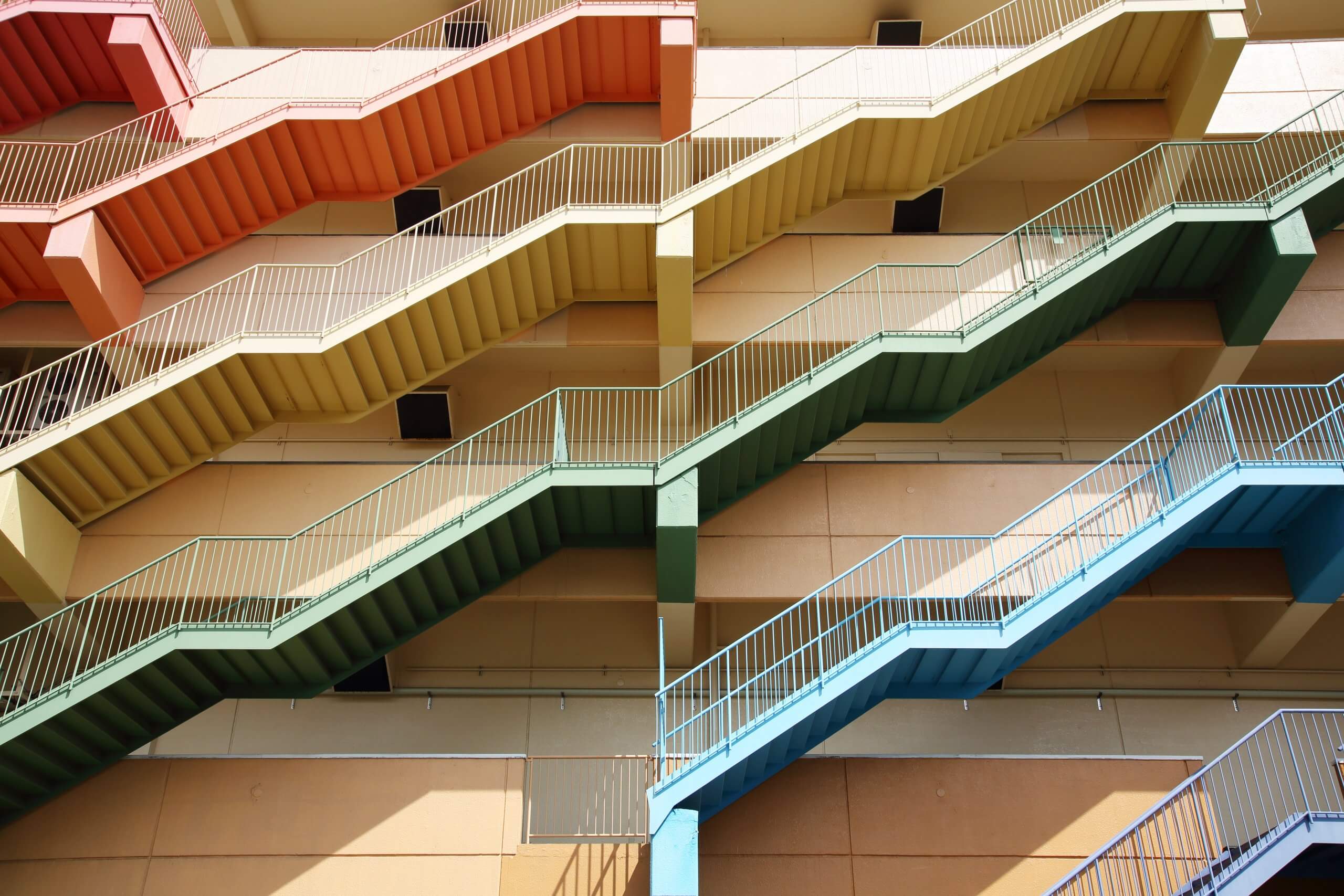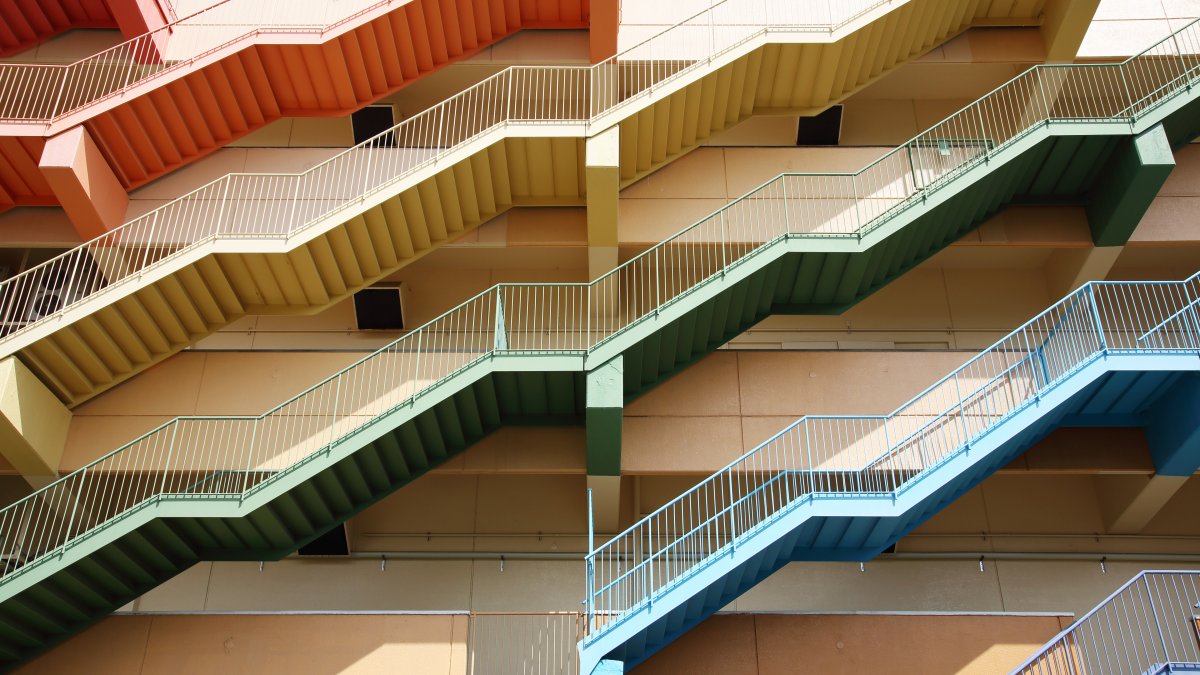
The staircase has both practical and aesthetic uses. It’s built or installed so people could go up and down the buildings simply and quickly. Aside from this, staircases complement maximizing one’s space. With it, a below-than-average home lot with 1,500 square feet can have several stories.
For aesthetic purposes, staircases today range from classic grand staircases to commercial stairs. Either way, staircases add appeal.
In commercial buildings, staircases are essential entrance and exit points either for regular or emergency use. Yet, there are a lot of causes that may call for redesigning like resetting thermostats or simply replacing old doorbells. Perhaps, your commercial building’s staircase is outdated, may need a quick fix, or maybe the building owners just need to revamp them.
If you’re a commercial building owner who’s thinking of repurposing your staircases, you could try to redesign. Here are some tips that could help you:
1. Understand IBC And ADA Compliance
Commercial buildings should have public access and ensure utmost safety. Hence, they should comply with the International Building Code (IBC) and Americans with Disabilities Act (ADA) standards. These regulations and laws could have prompted many building owners to redesign their entry and exit points according to these.
If you’re planning to redesign your stairs, you need to comply with the guidelines. Aside from this, you could also refer to the state laws and regulations for the stair railing and guard guidelines, tread depth, and size and height of the staircase.
2. Plan Out
Building owners could start thinking about the other factors that may affect the overall staircase design and renovation with the standards in mind. Generally, they decide whether to install a pre-engineered staircase or customized stairs. Nonetheless, the commercial stairs should be appropriate to the building, landing space, and public convenience.
Aside from appropriateness, building owners may also consider structural and material integrity. Is a steel staircase better? Are the dimensions proper? How long will the staircase last? Are they trip-free? These are some questions that need to be answered before the selection of the stairs and their provider.
3. Start With The Treads
The treads are some of the stair parts receiving the most impact and exposure. Hence, they’re the most prone to damage. In renovating a stairway, building owners may consider the required width of the treads.
In most cases, the width needs to be 0.3 times the occupancy load. If you’re a building owner who finds this formula a bit confusing, stick to the rule of thumb for this scenario. Never narrow the path of the staircase; a tread can be wider as you go down, but it shouldn’t be narrower. Don’t worry, there are plenty of skilled stairlift installers near me who can assist with proper installation and ensure safety for all occupants.
4. Replace Broken Balusters
Balusters help in two ways. They close the gaps between posts, protecting anyone from falling off the ledge. Further, they support the handrails. These benefits are enough reasons why baluster repair or replacement is equally important to the other parts of the stairs. For this purpose, they need to be regularly checked. In most cases, they usually have partial damages.
Workers need to completely fix the damage instead of doing cheap repairs using adhesive to keep the damaged parts intact. When the baluster replacement is complete, either an epoxy resin or PVA wood glue to the dowel will fully attach them to the rails and dowel hole.
5. Understand The Landing
The area of the landing may depend on the height of the stairs. Typically, there’s a landing for every 12 feet of stairs. In width, the landing could be as wide as the stairs. For the turning portion of the stairs, the maximum is 48 inches. If these numbers and the full description still confuse you, remember that your landing should be wide enough for two people.
6. Repair Handrailing
The repair and remodeling of the handrailing must be continuous in all portions. In choosing the railing, consider the fact that usability should be over the design and aesthetics. Yet, if you could have handrails that’d combine all the fantastic features, you could start installing them on your staircase. The height on top of the railings should be 34-38 inches from the nosing for technical measurements.
7. Add Aesthetic Appeal

As part of the commercial building, the staircase should be designed according to use. However, building owners could select from a vast range of commercial staircase design ideas circulating on the web. They could also ask the professional installers about the most recent staircase designs to showcase the staircase’s structural integrity and aesthetic quality. Yet, building owners should always choose quality over other features to have the top-tier type of commercial staircase.
8. Check Other Features And Considerations
Apart from the mentioned points, building owners may also think about the shape, size, and materials to be used. Collectively, these make up one’s structural integrity. For this purpose, one of the solid options is to hire professional installers as they have the tools and talent for the job.
In addition, in the context of ADA, building owners may also consider designing the treads and handrails that could fit the installation of accessibility ramps or stairlifts. These extra features help in getting closer to the goal of making commercial spaces more accessible to all people.
Wrapping Up
The first goal of commercial staircases is to be accessible to the public, especially to physically challenged individuals. Further, the staircases should have the structural integrity that can stand the weight, impact, and exposure to elements through time. To achieve these, building owners need to follow certain conditions and specifications in redesigning.
If you’re a building owner who needs to remodel your commercial staircase, you may think about the tips you’ve gained in this article. Some of these include compliance to IBC and ADA standards, planning out, and repairing and replacing the specific parts. Also, ask for professional help to be sure of the changes needed to be done.
Collectively, these points could help you rebuild a commercial staircase that could suit the public’s access needs. Yet, as repeatedly stressed, always choose usability and quality over aesthetics when redesigning and remodeling. Consider the ideas mentioned here as you prepare for your redesigning project.
Tim Clarke
Related posts
Stay connected
Today's pick
- Things to Remember While Designing Your Custom Modular Kitchen in GurgaonGurgaon now known as Gurugram is the second largest city in the state of Haryana and is a reflectiossn of an ideal modern city with futuristic goals. Witnessing rapid urbanization, it has also emerged as a hub for contemporary homes, with homeowners seeking innovative and... The post Things to Remember While Designing Your Custom Modular […]

